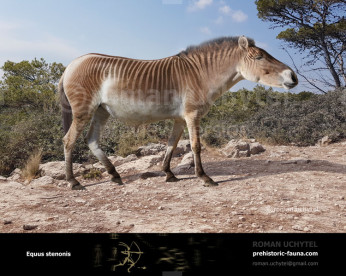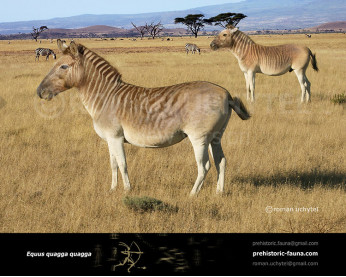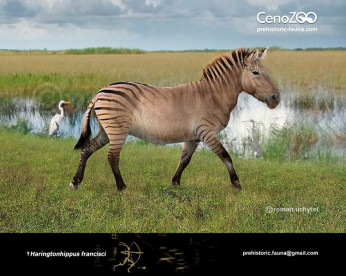Giant Cape zebra
2025820258Giant Cape zebra (†Equus capensis (Broom, 1909))
Order: Perissodactyla
Family: Equidae
Genus: Equus
Subgenus: Hippotigris
Species: †E. capensis
Expansion: lived in South Africa (10,000 years ago)
Dimensions: 2,6 m in length, 150 cm in height, 300 - 450 kg of weight
Equus capensis (the Giant Cape zebra) is an extinct species of zebra that lived during the Pleistocene of South Africa. The Giant Cape Zebra became extinct just over 10,000 years ago. This may have been partly because of the loss of its preferred habitat of extensive grasslands. E. capensis was first described from the Cape Town region of South Africa in 1909. E. capensis can be estimated to have grown to about 150 cm at the withers and 400 kg in body mass.
A 2009 DNA study analyzed several museum specimens identified as Cape zebras and concluded that all specimens tested clustered within the plains zebra, Equus quagga, with E. q. quagga and E. q. burchelli, rather than belonging to a distinct species.
Giant Cape zebra (†Equus capensis (Broom, 1909))
Order: Perissodactyla
Family: Equidae
Genus: Equus
Subgenus: Hippotigris
Species: †E. capensis
Expansion: lived in South Africa (10,000 years ago)
Dimensions: 2,6 m in length, 150 cm in height, 300 - 450 kg of weight
Equus capensis (the Giant Cape zebra) is an extinct species of zebra that lived during the Pleistocene of South Africa. The Giant Cape Zebra became extinct just over 10,000 years ago. This may have been partly because of the loss of its preferred habitat of extensive grasslands. E. capensis was first described from the Cape Town region of South Africa in 1909. E. capensis can be estimated to have grown to about 150 cm at the withers and 400 kg in body mass.
A 2009 DNA study analyzed several museum specimens identified as Cape zebras and concluded that all specimens tested clustered within the plains zebra, Equus quagga, with E. q. quagga and E. q. burchelli, rather than belonging to a distinct species.

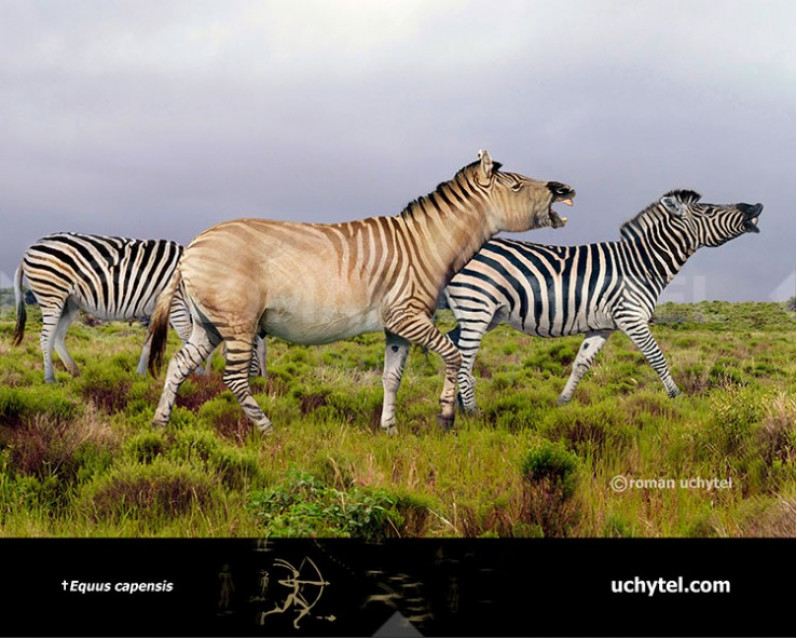
-797x638.jpg)
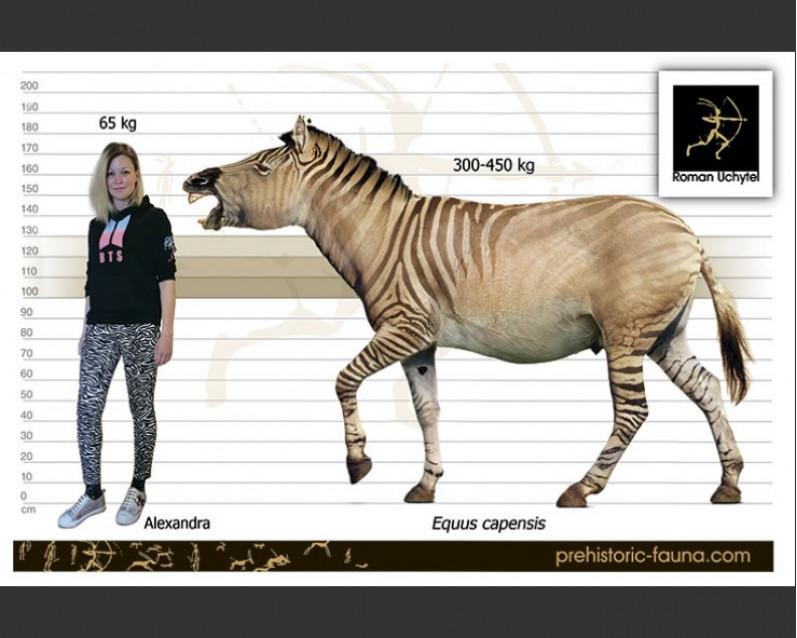

-70x56.jpg)

